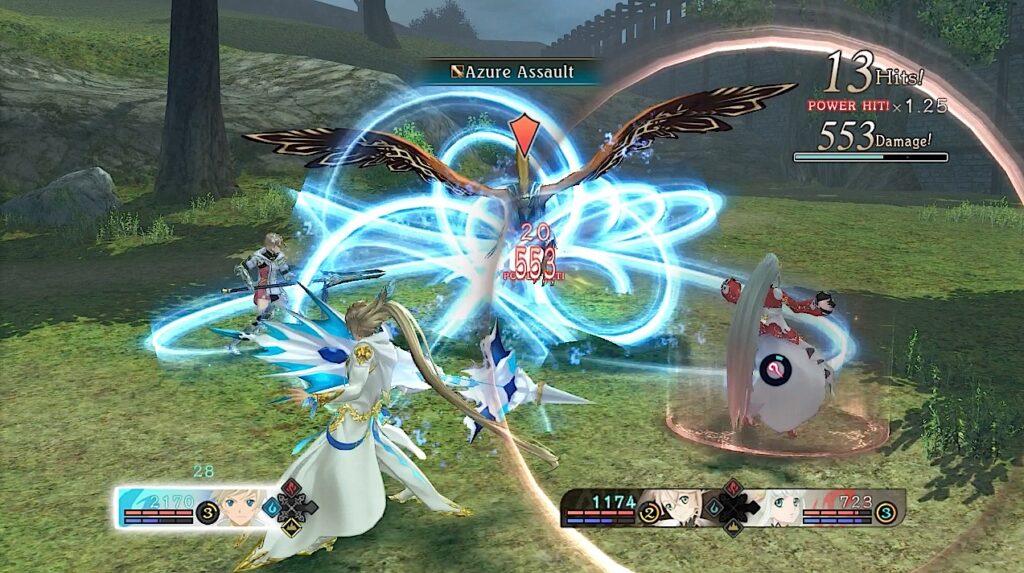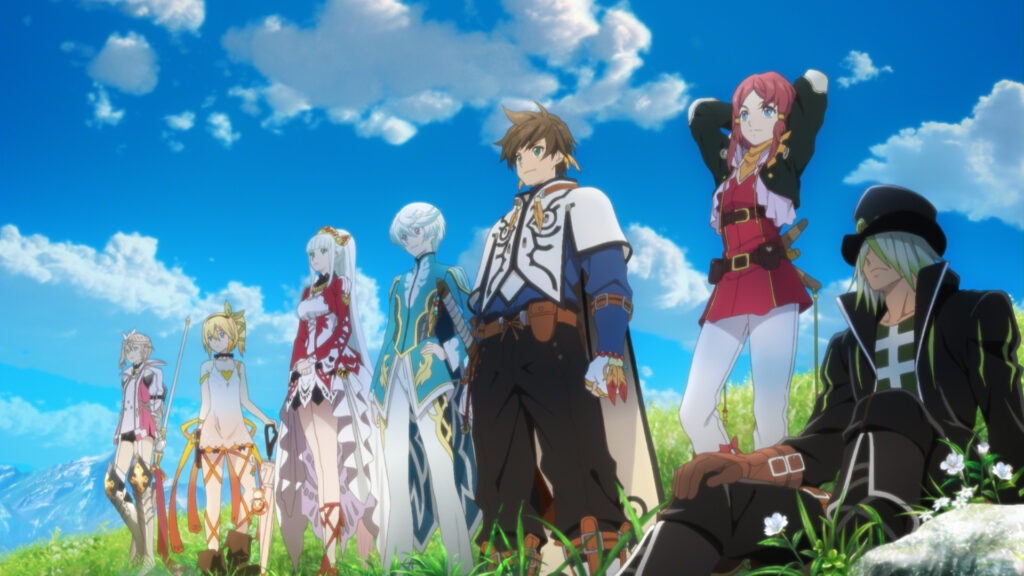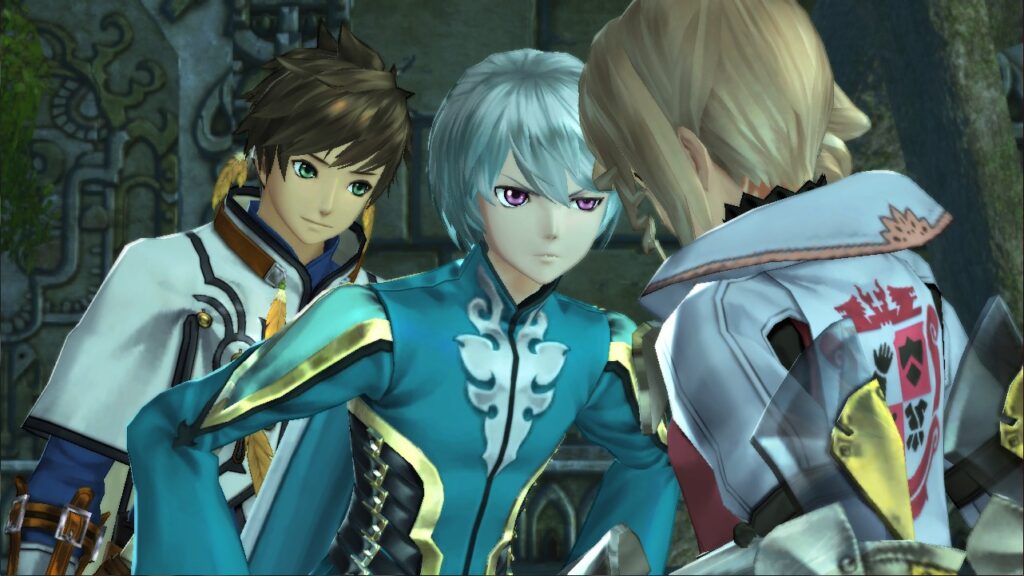As any gamer is well aware of, when you get the latest chapter of your favorite series and it fails to meet your expectations, it’s a lot harder to deal with then if it was just some random bargain bin title you pulled out of a GameStop sale. Tales of Zestiria was one such game to me; a chapter of my favorite series that barely lasted me a week before I quit it and sent it to my backlog.
Tales of Zestiria
Publisher: Bandai Namco
Developer: Bandai Namco
Platform: PlayStation 3, PlayStation 4, and PC
Release Date: October 20th, 2015
Players: 1
Price: $30.00 (Review Copy Purchased)
Now, this wasn’t the first time a Tales game underwhelmed me. I never finished the post-game content in Legendia and still believe Innocence had the worst main character of any JRPG ever…but Zestiria was supposed to be different. Zestiria was to be the beginning of a new era in Tales games, one that would bring all the modern RPG accoutrements other developers were using into Namco Bandai’s underappreciated little digital redheaded stepchild.
In the end, however, the game had changed too much for me and many other Tales fans. The strange weapon fusing system, the skill chart nonsense, the whole Normin thing…it just reeked of feature creep and exhibited a cheap sense of false complexity that seemed to complicate otherwise simple actions just to make the game look more advanced. Perhaps that’s not true and is just my elitist Tales fan bias showing, but Zestiria was – at least I believed at the time – a complete failure.
So why am I reviewing it over a year after it came out?
Probably because last month I restarted it (in preparation for Tales of Berseria’s release) and made an honest effort to understand its systems.
Let’s be frank, Zestiria is needlessly complex. The equipment fusing system and the way skills have to be farmed and placed on items to unlock stat boosts lacks any kind of intuitiveness whatsoever. What makes it worse is that while the game tries to train you in its use, it slices the info into tidbits that are sprinkled seemingly randomly onto the game’s maps. I think the Dutch settlers who stole Manhattan from the Native Americans explained their deal better than Namco has explained Zestiria’s systems within the game. It’s really that bad.
Of course, if you have a lot of patience, a good amount of free time, and some well written online guides…these hurdles can be leapt over with some hard work and perseverance. Granted, you won’t truly master the Normin, skill, and fusion systems until you’ve outgrown their usefulness, but once you do, you’ll become addicted to how you can bend the game to your favor with them.
Whether it’s boosting all your stats with the “Soljur” G-Union, cranking your hitpoints up with “Preest”, or going for the “Atakkus” E-Union and getting a piece of that wonderful attack boost parameter increase at every level up, you’ll soon utterly break the game with your juiced up party. For that reason alone, those who enjoy min/max’ing and “working the math” will enjoy learning – and exploiting – Zestiria’s headache-inducing mechanics. Just don’t make the mistake I did and spend all day on the couch comparing equipment loadouts and fretting over fusing while your significant other sits next to you thinking you’ve gone crazy for staring at an unmoving screen for 2 hours.
It can get terribly addictive if you’re the OCD type.
That being said, once you get past (or just ignore) the initially impenetrable gameplay mechanics and reach the real meat of the game, it’s not too bad. Though the cast isn’t as diverse or entertaining as Vesperia’s, and the story doesn’t have plot twists like Xillia 2 did, Zestiria manages to be a fairly decent and middle-of-the-road Tales game in terms of quality. Though that may sound like a backhanded compliment, it isn’t meant to be. Considering how good some of the previous games have been, it’s impressive praise.
Tales of Zestiria has you playing the role of Sorey, an orphan raised amongst Seraphim who has a nerdy fascination with ruins and ancient lore. Thanks to his pure heart, Sorey is not only able to see the usually invisible Seraphim that he lives with, but does his best King Arthur impersonation by claiming a sealed sword that marks him as the land’s chosen savior. What follows is a long trip through his war-torn world to purify the hearts of his countrymen and correct the mistakes made by the heroes who had come before him.
The story isn’t terrible and does have a few moments where tears may be shed (The battle with Tiamat comes to mind), but for the most part it’s a watercolor paint-by-numbers that didn’t get me caring for my party members until a good 25 hours in. There were some characters that impressed me immediately – namely sarcastic goth girl Edna and sweet little Alisha – but one of those characters disappears for most of the game.

After some story progression, I found myself connecting with Lailah and felt she had the same motherly appeal Star Ocean 5’s Miki exhibited. Even Sorey – who I felt was incredibly naive and reminded me of a “weenier” version of Stahn Aileron – made a believer of me towards the end when his innocence gave way to a delightfully profound world weariness. Sadly though, I never cared much for the rest of the cast and I felt this played a big part in my initial backlog abandonment of the game.
Thankfully I stuck with it, since most of the remaining features in Zestiria are some of the best of the series. The nearly seamless combat transitions, Sakuraba’s excellent soundtrack, the gorgeous visuals, the large amount of ancillary content…Zestiria simply isn’t deserving of all the derision it receives from the Tales fan community.
Combat has always been the one strong point of every Tales game, and at least in my opinion, it’s been honed to a razor’s edge in Zestiria. Though I feel the “Armatized” forms are too powerful (That’s when your human characters merge with a seraphim party member), I love all the options it creates in battle. Not only do you have regular moves and hidden artes, but you also have spells, mystic artes, and “banish blasts”. All of these maneuvers are linked to an ever-filling “blast gauge” that – like most parameters in the game – can be exploited to your benefit.
It’s a slick, magic point-less system that rewards careful timing and dodging rather than button mashing, and it is my second favorite combat engine after Tales of Graces F. Though I wish the computer controlled party members weren’t saddled with brain-dead A.I. which required me to babysit them during some of the late game optional boss battles (Dragon Warlock and Demon Rodler especially), my own skills were able to solo most enemies in armatized form on moderate difficulty, so I can’t complain too much.

There are other little quibbles I have with Zestiria, such as the god awful battle camera that often zooms in on enemy feet while I’m trying to figure out where I am and the sometimes overly-expansive overworld that has to be walked through until you unlock save point travel, but once again: it’s not a deal breaker.
In the end, your enjoyment of Zestiria depends on how patient you are as a Tales fan and how forgiving you are as a gamer. Sure, there are problems with the game, but the addictive combat, fun to exploit skill systems, and the gorgeous visuals all add up to outweigh the negatives.
Just be sure to take a look at the fan-operated wiki and study up on skill stacking, because you’ll need it when your NPCs bum rush a boss without their guard up.
Tales of Zestiria was reviewed on PlayStation 4 using a physical copy purchased by Niche Gamer. You can find additional information about Niche Gamer’s review/ethics policy here.
The Verdict 8.5
The Good
- Gorgeous visuals and soundtrack
- Challenging, addicting combat
- Lots of options available for character growth/tweaking
- Great fun if you’re into min/max’ing
The Bad
- Horrible partner AI
- Battle camera needs work
- Quasi open world areas a bit too large
- Maddening if you’re not into min/max’ing


